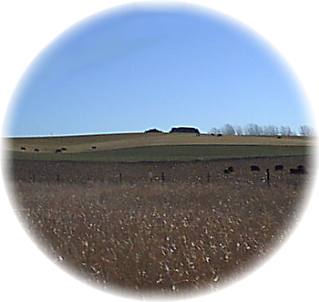Dodge County, NE

Dodge County, Nebraska, offers visitors an unlimited number of activities. The northern portion of the county with sprawling views of grain and grazing acreage is also a mecca for sportsman. Located just five miles north of Scribner, the Dead Timber State Recreation Area provides camping, fishing, hunting and other recreation adjacent to the Elkhorn River. Dead Timber is one of the few state recreation areas open to hunting in the fall. Hunting is also permitted in the Powderhorn Wildlife Management Area northeast of Scribner. It borders the Elkhorn River and primitive camping is permitted.
The Fremont Recreation Area is about three miles west of Fremont and boasts camping, fishing, hiking, and other activities. About 800,000 visitors use the area each year. Another major attraction in Fremont is the Fremont Dinner Train and Excursion which allows guests the chance to eat a gourmet dinner, ride the rails, and sometimes, take in a special theatre production. The excursion railroad travels 17 miles to Nickerson and returns. The railroad has vintage 1920s through 1940s equipment.
A major attraction is the Nebraska Motorplex in Scribner. An old World War II military base is the home to one of Nebraska's finest drag strips. Cars race at more than 300 miles per hour and the facility hosts local, regional, and national events.
Other historic areas include the town of Hooper whose main street has been listed as a historic district. Elsewhere in the county, visitors can stop by the Musbach Museum in Scribner, or make an appointment to view the historic four-acre Poor Farm. In Dodge you will see the historic Town Hall, the 1912 High School, and enjoy dining at the Dodge City Restaurant or delight your body and soul with pastries and sausages at the B and B Bakery, a nationwide catering center.
Explore Dodge County
North Bend Carnegie Library
The North Bend Carnegie Library, dedicated in 1913, is a typical example of a small town library in the early twentieth century. Andrew Carnegie, often called the "Patron Saint" of libraries, was responsible for funding the
North Bend, NE National RegisterDodge High School
Education was a top priority during the growth of Dodge, starting in a brick schoolhouse built in 1887. An addition was needed in 1889. According to a 1891 report, District 46 had 143 students and four teachers. St.Wenceslaus Catholics opened a parochial school in 1911
Dodge, NELouis E. May Historical Museum
The original portion of the Museum structure, in the Italiante Revival style, was built by Fremont's first mayor, Theron Nye. The Museum is an elegant, two-story brick residence originally constructed in 1874
Fremont, NE MuseumsMusbach Museum
Originally the Milligan Dry Goods store built in 1884, the museum opened in 1973 as testament to German pioneer heritage with antique farm machinery, medical equipment, kitchen china, glass items and special programs and displays.
Scribner, NE MuseumsHistoric Visitors Center
The former Fremont Post Office building celebrated its opening August, 2000, as the new home to the Fremont Area Chamber of Commerce and several other non-profit agencies.
Fremont, NE Historic Post Offices
Depots
Visit the historic depots in the downtown district of Fremont in the vicinity of 1st and "D" Streets. There is the two-story brick Chicago & Northwestern Freight House built in 1903 after C&NW gained control of the Fremont, Elkhorn & Missouri Valley Railroad which began in 1869 (now the Fremont &
Fremont, NE Railroad HistoryJohn C. Fremont Days
This is the community's premier celebration, and is held three days in July. Activities take place throughout town and include a wide variety of entertainment, cultural presentations, historical re-enactments, food courts, live entertainment, craft booths, sporting events and more.
Fremont, NE Reenactments
R. B. Schneider House
The large two-story frame house, located in Fremont, exemplifies a transitional product of Queen Anne and Neo-Classical Revival styles. Businessman R. B. Schneider, founder of the Nye, Schneider, Fowler Company, grain dealers, built the house in 1887
Fremont, NE National RegisterHistoric District Walking Tour - Downtown
Take yourself back in Fremont's history with a self-guided tour of the Downtown District. The Fremont Historic Commercial District consists of an enclave of late nineteenth and early twentieth-century buildings that represent Fremont'
Fremont, NE City Walking/Driving Tour